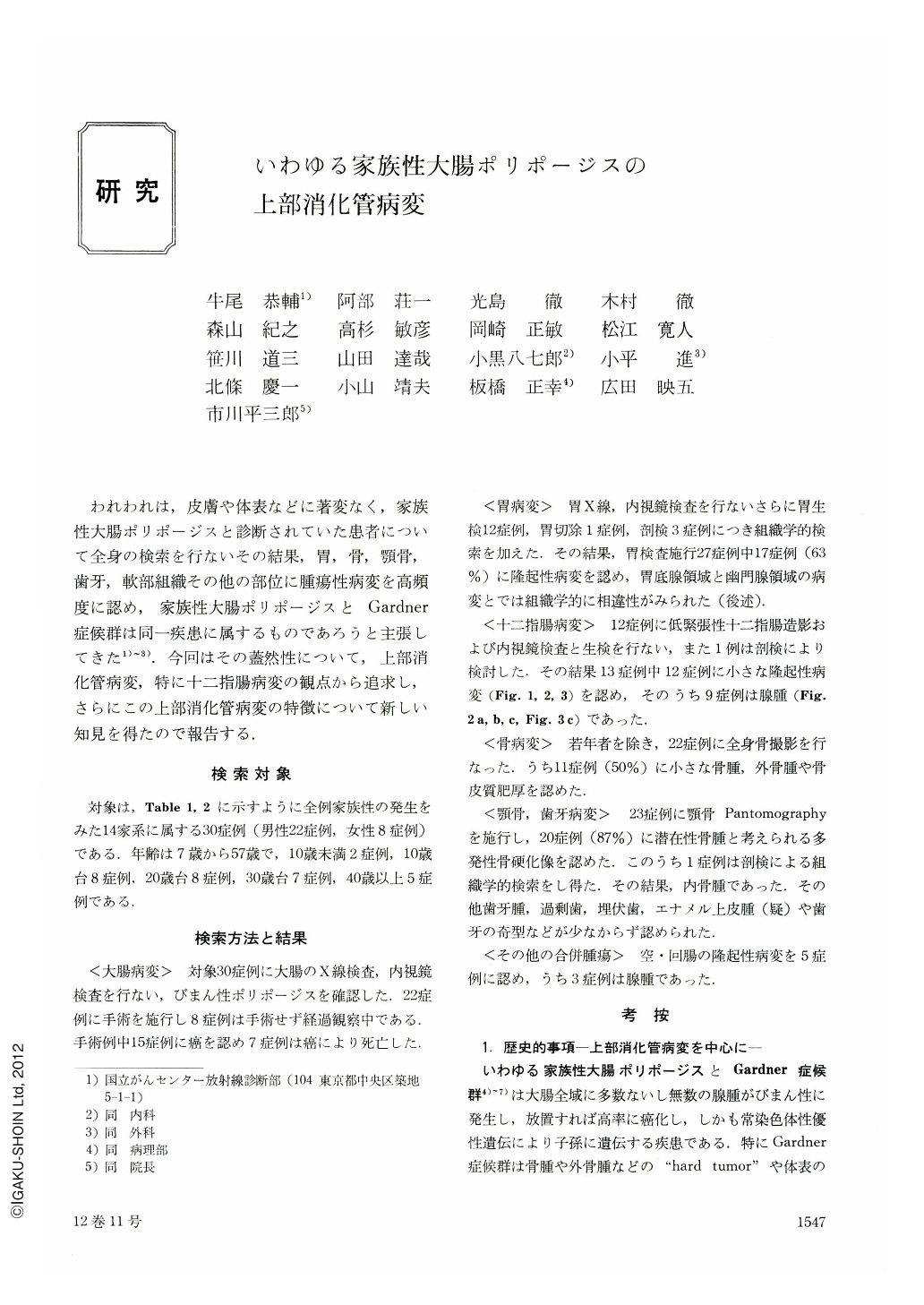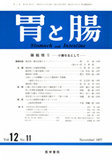Japanese
English
- 有料閲覧
- Abstract 文献概要
- 1ページ目 Look Inside
われわれは,皮膚や体表などに著変なく,家族性大腸ポリポージスと診断されていた患者について全身の検索を行ないその結果,胃,骨,顎骨,歯牙,軟部組織その他の部位に腫瘍性病変を高頻度に認め,家族性大腸ポリポージスとGardner症候群は同一疾患に属するものであろうと主張してきた1)~3).今回はその蓋然性について,上部消化管病変,特に十二指腸病変の観点から追求し,さらにこの上部消化管病変の特徴について新しい知見を得たので報告する.
検索対象
対象は,Table 1,2に示すように全例家族性の発生をみた14家系に属する30症例(男性22症例,女性8症例)である.年齢は7歳から57歳で,10歳未満2症例,10歳台8症例.20歳台8症例,30歳台7症例,40歳以上5症例である.
Gardner's syndrome (a familial disease characterized by colonic polyposis, osteomatosis and soft tissue tumor) and familial polyposis coli have two theories for the pathogenesis. One is that they are caused by different gene ; and the other is that both originate from the same single gene. We have attempted to examine the stomach, doudenum, bones, teeth and other lesions on 30 cases in 14 pedigrees of familial polyposis coli not accompanied by distinct masses in appearance. The following results were obtained : (1) Accompanying polypoid lesions of the stomach were observed in as many as 17 of 27 cases (63.0%). (2) Polypoid lesions of the stomach were classified into two groups : one was the fundic glandular lesion showing localized simple hypertrophic change and the other was the pyloric glandular lesion showing “atypical epithelium”. (3) Accompanying flat polypoid lesions of the duodenum were observed in 12 out of 13 cases, and adenoma were found in 9. (4) Of 22 patients whose bones were examined, small osseous abnormalities such as osteoma, exostosis and cortical thickening were accompanied in 11 cases (50%). (5) Orthopantomagraphy was carried out in 23 cases and multiple osteosclerotic lesions of the mandible and maxilla were observed in 20 (87%). (6) A high percentage of abnormalities of the teeth were also observed. (7) Epidermal cysts were observed in 3 cases. And gastric cancer, thyroid cancer, adrenal adenoma, or mesenteric desmoid tumor was discovered in one case respectively. (8) Between the cases accompanied by osseous changes (Gardner's syndrome) and those which were not accompanied by them (familial polyposis coli), there was no distinct difference in the number and size of polyps in the large intestine, duodenum, stomach and other tumor lesions.
These facts have shown us that there exists no distinct qualitative difference between the two diseases. Conclusively these two disease entities are the same systemic disease with a predisposition to multiple tumors formation and they both should be called as “familial gastrointestinal polyposis syndrome”.

Copyright © 1977, Igaku-Shoin Ltd. All rights reserved.


